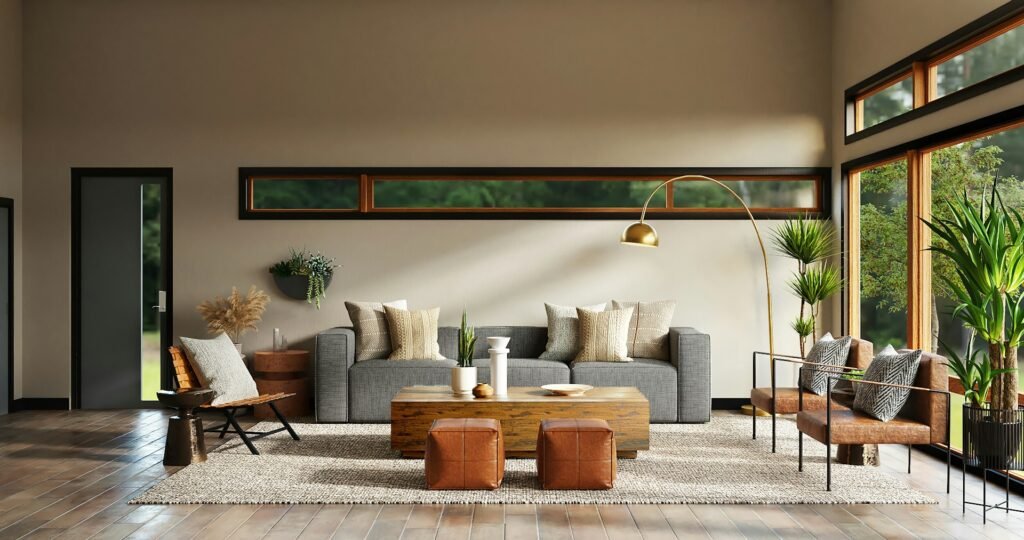Interior design is more than just arranging furniture aesthetically in a room; it’s a meticulous blend of art and science that aims to enhance the interior of a space to achieve a healthier and more aesthetically pleasing environment for the people using the space. Whether you are looking to refurbish your home or just want some tips to spruce up your living area, understanding the basics of interior design can be incredibly beneficial.
The Evolution of Interior Design
Interior design has evolved significantly over the years. From the rich tapestries of the Renaissance to the minimalist trends of today, each period in history has its own distinct style and characteristics. Initially, interior decoration was the privilege of the wealthy and royal. However, over time, it has become accessible to everyone, with styles and trends that cater to a wide range of tastes and budgets.
Understanding the Basics of Interior Design
At its core, interior design is governed by certain key elements and principles including balance, contrast, rhythm, scale, and proportion. The use of color, texture, and form plays a crucial role in creating a space that can influence mood and behavior, make a small room appear larger, or a large room feel more intimate.
Interior Design Styles Explained
There are numerous styles within interior that cater to individual tastes and cultural influences. Modern design emphasizes clean lines and minimalism, while contemporary design might incorporate trending styles that involve bold colors and innovative materials. Traditional styles often reflect classic European decor, rustic styles embrace a more natural, organic feel, and minimalist designs focus on simplicity and functionality.
The Process of Designing a Space
Designing a space involves several stages from conceptualization to execution. This includes drafting floor plans, choosing color schemes, and selecting furniture. Each step requires careful consideration to ensure that the end result is both functional and beautiful.
Choosing the Right Furniture and Decor
Selecting the right furniture and decor can transform an ordinary room into an extraordinary space. It’s important to consider both aesthetics and functionality when choosing furniture. Additionally, mixing different styles can create a unique, personalized environment that reflects your personal taste.
Lighting: The Unsung Hero of Interior Design
Lighting plays a pivotal role in interior design. It can dramatically change the mood and functionality of a space. Effective lighting involves layering different types of light sources, including ambient, task, and accent lighting, to create a versatile and welcoming atmosphere.
Maximizing Small Spaces
For those living in small apartments or homes, maximizing space is crucial. Innovative solutions like multi-functional furniture and clever storage options can help make the most of limited space, ensuring that it remains functional without sacrificing style.
Sustainable and Eco-friendly Design
Sustainability is increasingly important in today’s world. In interior design, this involves the use of eco-friendly materials and technologies that minimize environmental impact. Sustainable design not only helps conserve resources but also creates healthier living spaces.
Technology in Interior Design
Technology has transformed interior design with tools such as virtual reality and 3D modeling, allowing designers and clients to visualize their spaces accurately before the actual decorating process begins. Smart home technology also plays a role, with systems that can control lighting, temperature, and more.
The Role of an Interior Designer
While DIY projects are popular, hiring a professional interior designer can be invaluable, especially for major projects. They bring expertise in design principles, product knowledge, and project management to ensure that the vision for your space becomes a reality.
DIY Interior Design Tips
For those who prefer a more hands-on approach, there are plenty of DIY projects to tackle that can personalize your space. From painting walls to rearranging furniture, these projects can be a fun and rewarding way to infuse your personality into your home.
Summary
Interior design is an exciting field that combines creativity with practicality. Whether you’re interested in following the latest trends or embracing classic styles, there’s a wealth of options to explore. By understanding the basic principles and exploring different styles and techniques, you can create a space that truly feels like home.

